When we think of Rally, images of sideways Subarus and Dakar 450’s come to mind. Vehicles capable of haulin’ arse over gnarly terrain all while looking so damn good in the process. It’s an aesthetic that has made its way into the Rocky Mountain range of bikes over the years and 2024 ain’t no different.
We take a deep dive into Rocky Mountains new Altitude C90 Rally edition to see if it lives up to it’s namesake.
Review: Blake Nielsen Photos: Matt Staggs
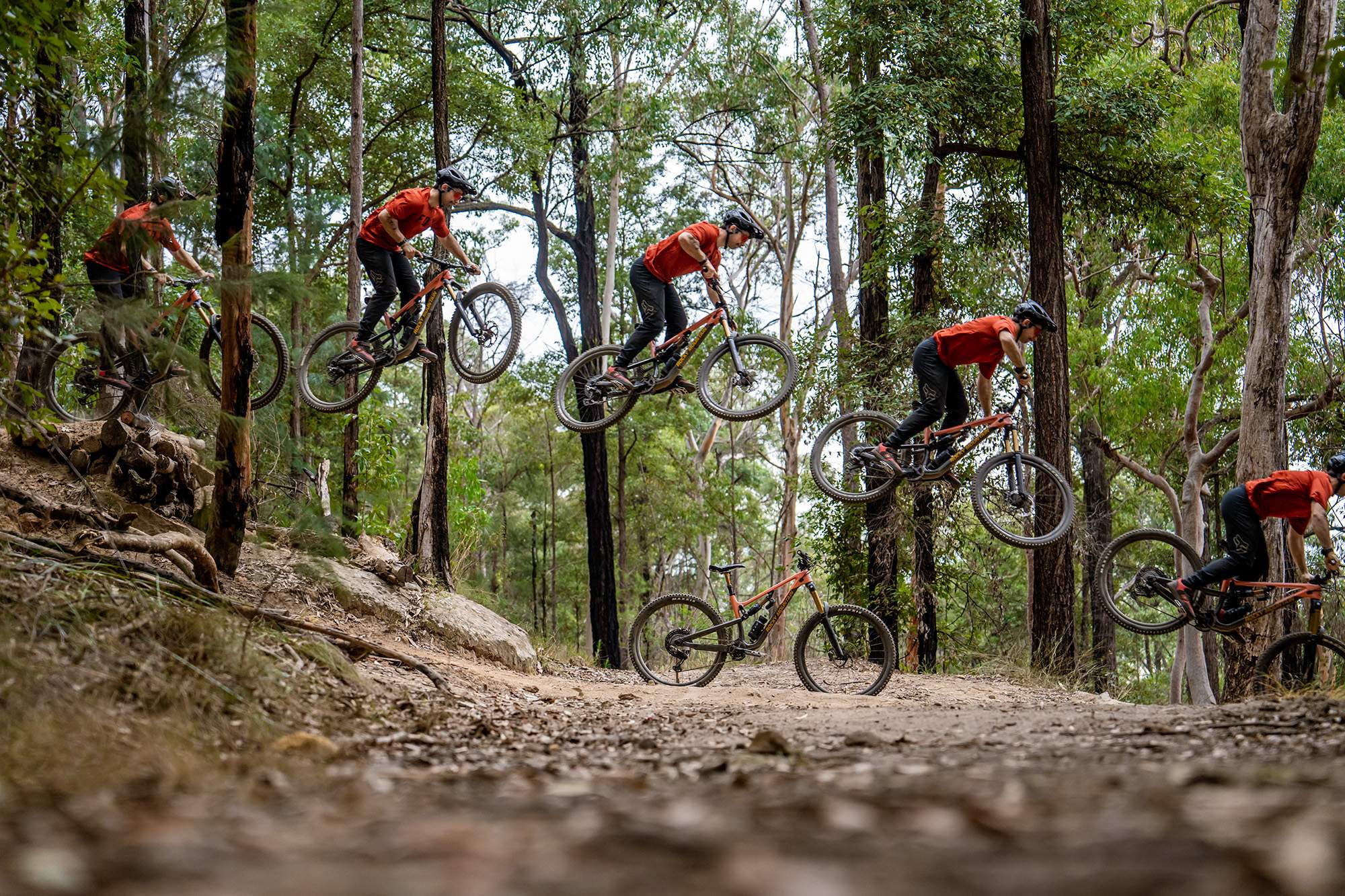 First question: Blake, when was the last time you rode a pink mountain bike?
First question: Blake, when was the last time you rode a pink mountain bike?
I actually really like the paintwork on this model! But yeah to answer the question not since working as a mechanic in shops and testing the freshly built 16″ girls bikes can I can I’ve ridden a pink bike… Haha!
This is definitely one speedy looking bike! Those silky smooth ovalised tubes really add to the minimalist and ‘clutter free’ appearance of the frame. Plus, damn this thing feels light when you pick it up. Would you agree?
Absolutely! While the Altitude still retains the same layout and silhouette as it has had for many years the latest generation sees more refinement than ever. Rocky do a fantastic job of leaving no stone left unturned. Every detail, no matter how big or small is considered and intergrates seamlessly with the overall package. With a super high quality paint job covering a full carbon fibre frame construction and a high end build kit on our test bike makes for a featherweight package.
Interestingly Rocky offer their carbon Altitude models in various wheel size options, with a choice of either 27.5” or 29” hoops with size S and M frame, whilst size L and XL frame automatically come with 29” front and rear. Further more, the Canadian brand have designed the Altitude to be compatible to run a mullet set-up and they offer an aftermarket rear (front) shock mount which provides the perfect geometry position when being run with mixed wheel size. What wheelsize did you test and in your opinion does Rocky seem ‘on the money’ with all of those various wheelsize options?
With the option of running so many wheel size formats on the one bike, it’s clear to see that Rocky Mountain really do want to provide the best possible bike for their end customer. Our test bike came as a 29er, on a medium frame. I also played around with it setup as a mullet too. With the option of alternating wheel sizes you can truly tailor the Altitude to the exact bike that you need or that your trails are calling for, as time goes on we are seeing more and more brands design the mixed wheelsize into their bikes after years of it being one or the other.
Spec’d with its 170mm fork up front and 160mm of travel out the rear on paper the Altitude would appear to blur the lines between the ‘all-mountain’ and ‘enduro’ categories. That said, having spent a heap of time riding it if you had to pick one of those cats to place this bike where would it end up?
It is hard to put the Altitude into one box when it comes to this, especially considering the amount of adjustability that is available through the Ride 9 system, reversible dropouts and rear wheel size options. Rocky Mountain do offer a longer travel “Slayer” mtb, which again on paper would fall into the enduro category, interestingly enough though The Rocky Mountain enduro team tend to ride the Altitude on the world circuit year round. The Altitude really is one of the most versatile platforms on the market right now, it just ticks so many boxes!
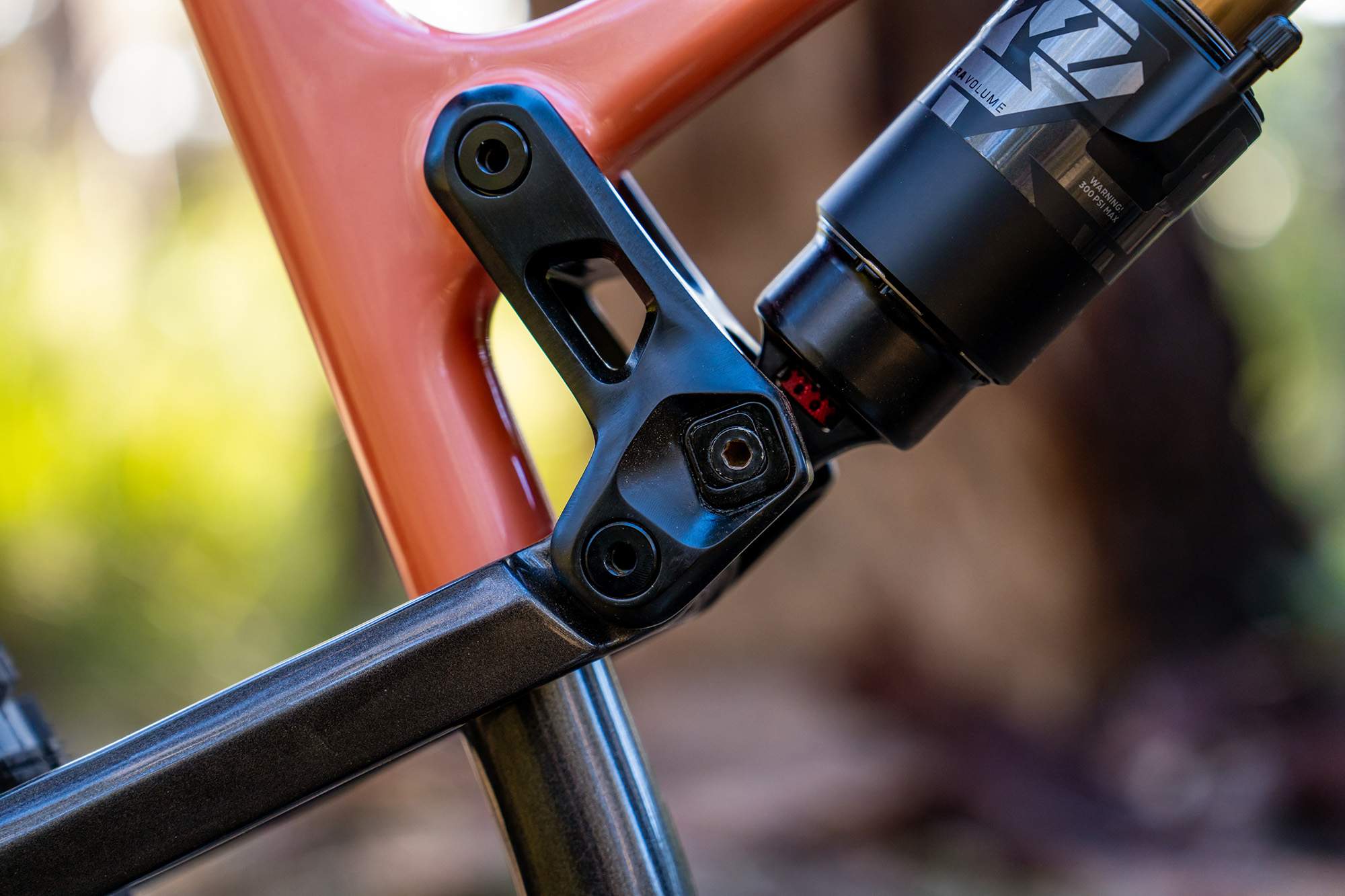 One of the things we’ve always rated about the Rocky’s that we’ve tested in the past is their super easy to ‘dial in’ Ride-9 geometry adjustment system and it looks like this bike features an updated version of that system. Give us a run-down of how it works and what the rest of the geo package feels like?
One of the things we’ve always rated about the Rocky’s that we’ve tested in the past is their super easy to ‘dial in’ Ride-9 geometry adjustment system and it looks like this bike features an updated version of that system. Give us a run-down of how it works and what the rest of the geo package feels like?
The Rode 9 geometry adjustment is one of the most advanced systems to date, which is made even more impressive that Rocky Mountain have been sporting it for years and years already. At the heart of the system is a pair of interlocking, square washers essentially with an offset hole that the rear shock bolt goes through. By rotation the squares in relation to each other gives the offset hole a new position relative to the front shock bolt land land, giving you your adjustment.
As you’d expect from the top of the line model, this bike comes spec’d with a heap of bling. Give us an overview of what you were digging and also if there was anything you didn’t entirely rate straight out of the box?
It is absolute bling from top to tail, with Fox Factory Kashima 38 fork, X2 shock and transfer dropper post, Shimano XTR all over except for the Race Face Turbine cranks. Race Face ARC carbon wheelset wrapped in sticky Maxxis tyres and Cushcore XC inserts out of the box. Race Face also handle (pun intended) the cockpit with a carbon Next R handlebar and turbine stem, a nice set of ODI Elite Pro lock-on grips finish it off. With these combination of parts there would honestly not be anything I would change out of the box, coming back to the fact that Rocky Mountain take pride in making the best bikes they can.
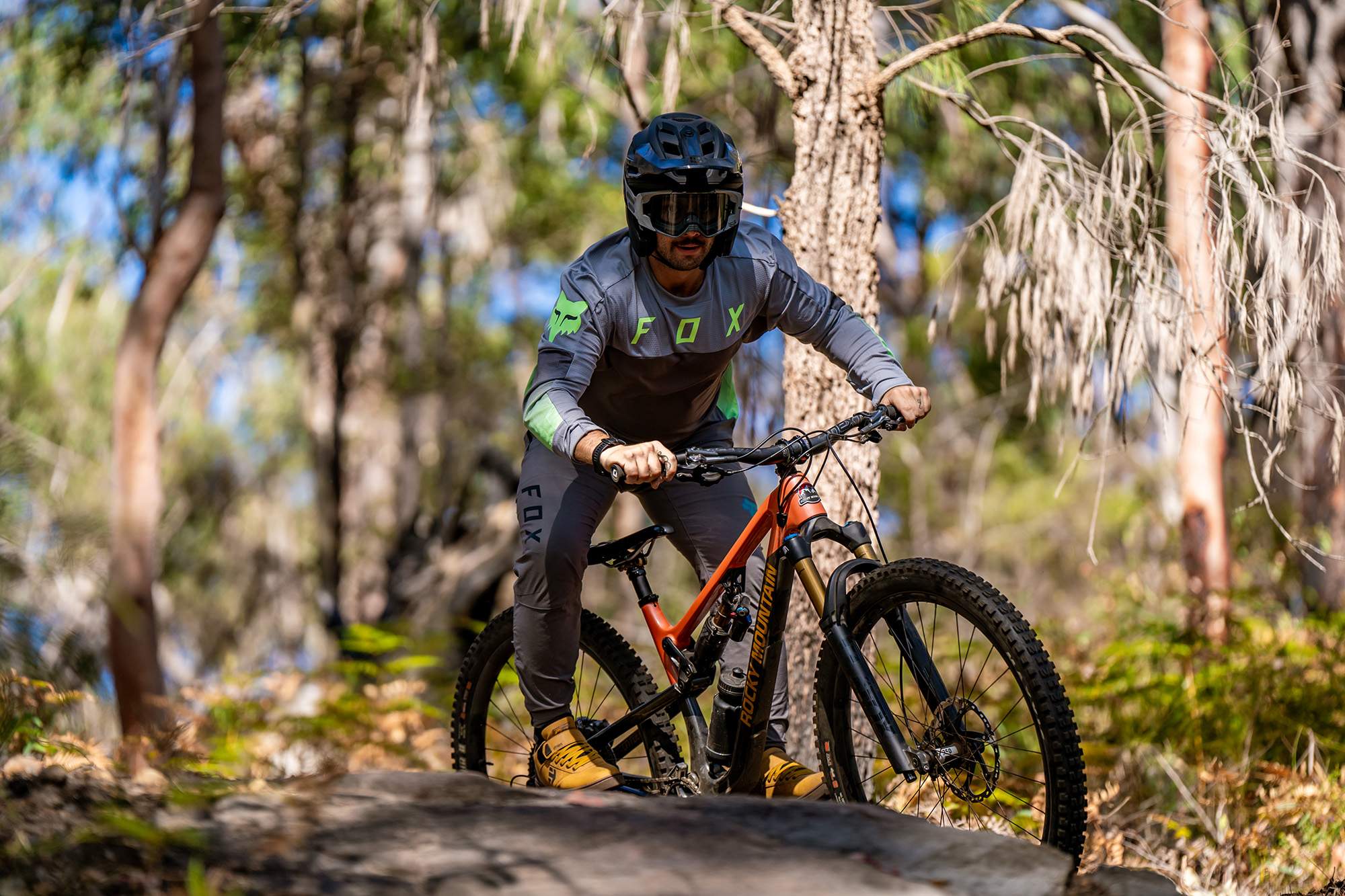
Watching you ride this bike during the final photoshoot it definitely looked like it was really playful and you were able to throw it around with ease. Often that ‘flickabilty’ factor comes at the expense of losing some of that stability at speed, was that the case with the Rocky?
Being that this is essentially Rocky’s flagship enduro race bike to their super successful EDR team, it came as no surprise that the Altitude felt great on either end of that spectrum. Generally, to feel stable at high speeds the playfulness of the bike will suffer and vice versa. The lighter weight does help with this, obviously the less mass you need to move the direction of the easier, other things like the shorter 44mm offset on the 29er fork and really being able to tune in the geo to your exact liking with the Ride 9 system makes for a bike that you feel at one with.
While still managing the high speeds in rough trail and being predictable enough to have the confidence that if things do go slightly out of plan at Mach 10, you’re riding inputs aren’t going to cause a crazy output from the bike.
Another thing we noted during that photoshoot was how quiet the bike rode. Is that something you noticed as well during the time you spent riding it?
Damn Rocky have done well keeping this weapon whisper quiet and smooth down the trail! With proper internal routing, featuring internal tubes that run though the tube-set, not just openings at the entry and exit, as well as super effective chainstay/seat stay protection from
Tell us a bit about how the bike felt getting up to speed and pinning down a trail?
I ride a lot of different bikes a lot of the time, so to me no setup is strange anymore, but I did feel particularly at home on the Altitude quite quickly. I have ridden earlier iterations of the Altitude before so i was familiar with the platform and suspension kinematics ect. The new bike though as a whole package out of the box all came together very nicely and didn’t leave me wanting anything more than a few setup changes to be made after the initial rides.
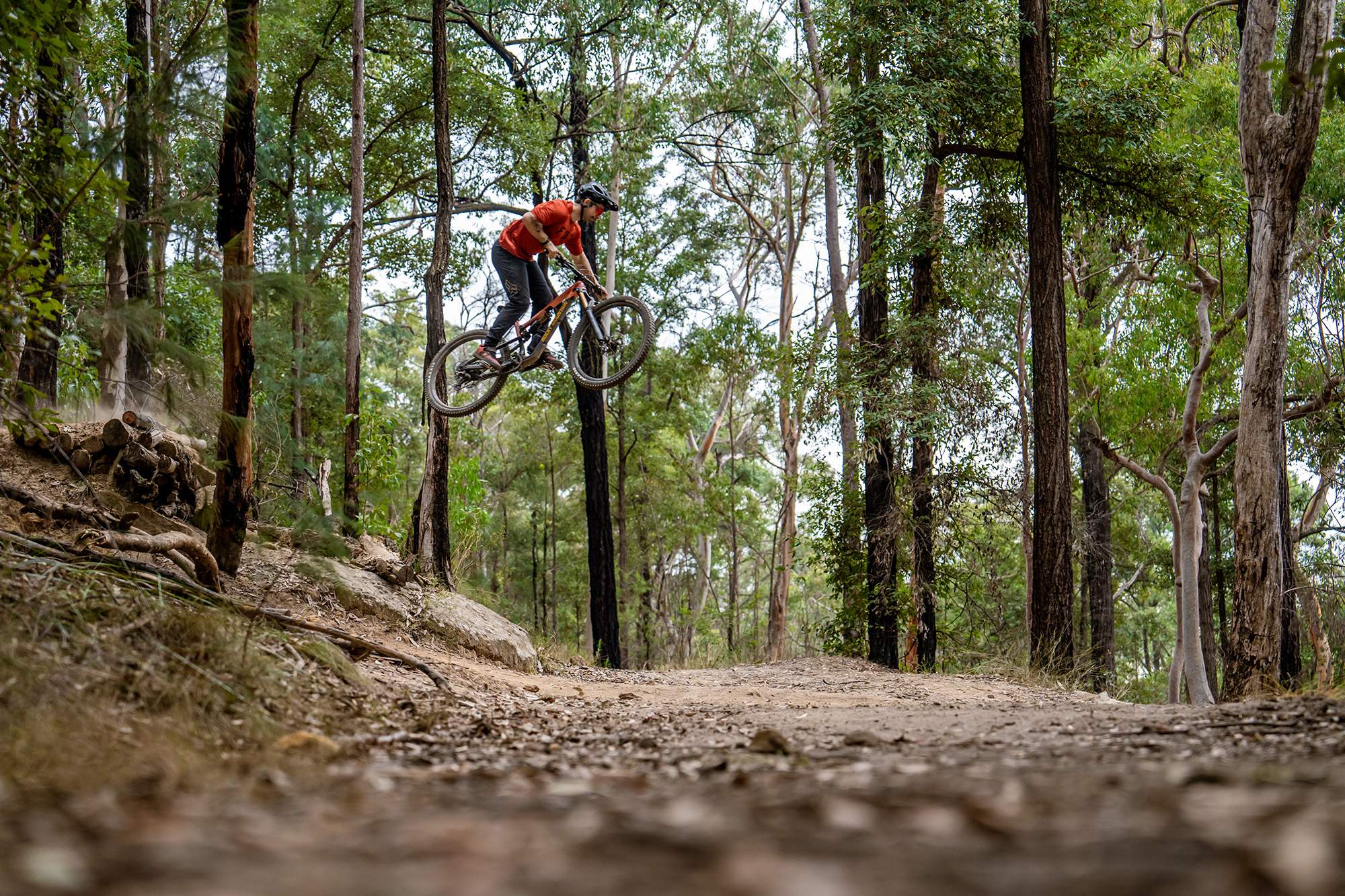 How deep did you find that you were able to push the Altitude on techy rough sections before the bike felt like it was ‘in over its head’ so to speak?
How deep did you find that you were able to push the Altitude on techy rough sections before the bike felt like it was ‘in over its head’ so to speak?
Coming back again to the ride 9 system and if you invest the time test really find the best setting for you, you’re able to tune the bike to excel in whatever area you want. Up until the time of writing this I haven’t felt that the Altitude has been out of it’s comfort zone on all of the usual test tracks that I ride basically every test bike on. With plenty of travel and a slack headtube angle in my preferred setting, the Pink Panther ate up everything I could throw at it and came back for more.
Given that it has a solid amount of rear travel (160mm) how does the Altitude pedal when you’re ascending up a trail?
With it’s light overall weight and efficient suspension platform, the Altitude climbs far better than I can! There were very few instances where I found myself needing to reach for the climb position lever on the Fox X2 shock to give me a helping hand. A comfortable seated position with weight over the front gave me the confidence on the more technical sections, while retaining plenty of traction. If i was to gripe on one thing, as trivial as it is, the WTB Volt Race saddle, while comfortable, has a grippy material on it the prevent sliding back on the seat, this makes an awful racket when my pant legs were swiping passed it. Like I said, trivial, but it was pretty annoying to be honest.
Final question, do you reckon Rocky have hit the nail on the head with the design and performance of this latest generation of the Altitude and what type or rider is it going to suit the most?
Rocky Mountain have made an incredibly versatile MTB in the Altitude. Although it could be considered almost too much travel for an Enduro bike on Aussie race tracks, with how much adjustment and tuneability, along with the lightness of it I have to say it would be hard to go passed it in overall performance.
The Altitude really would suit anyone who had a gravity focus to their riding, I do think that you have to be willing to invest the time into experimenting with the Ride 9 adjustment though to get the most out of it. It is worth that time though for the rewards that it offers.
 Rocky Mountain Altitude c90 Rally
Rocky Mountain Altitude c90 Rally
Frame // Full carbon throughout
Sizes // S – XL
Travel // 170mm fork, 160mm rear.
Wheels // 29”, 27.5” or Mullet
Weight // 14.6kg (she’s light alright!)
Price // Carbon models starting at $6,999 ($14,999 as pictured here)
Browse // www.bike.com









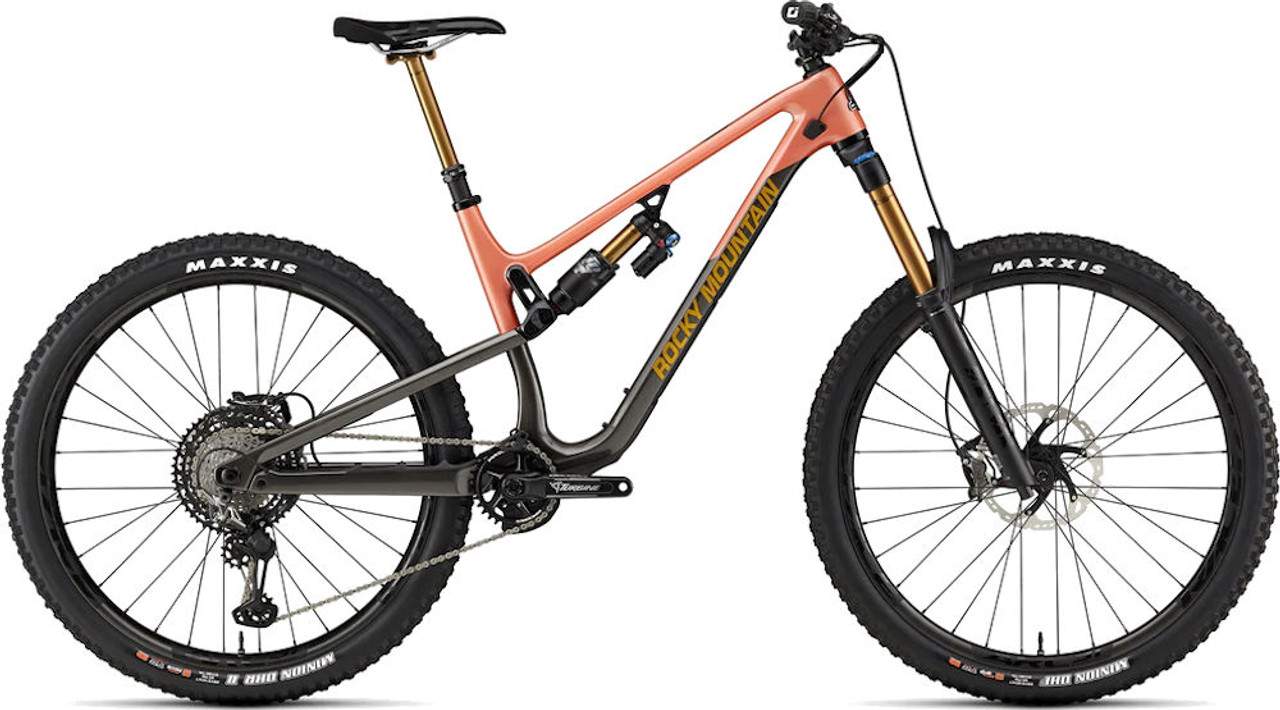 Rocky Mountain Altitude c90 Rally
Rocky Mountain Altitude c90 Rally